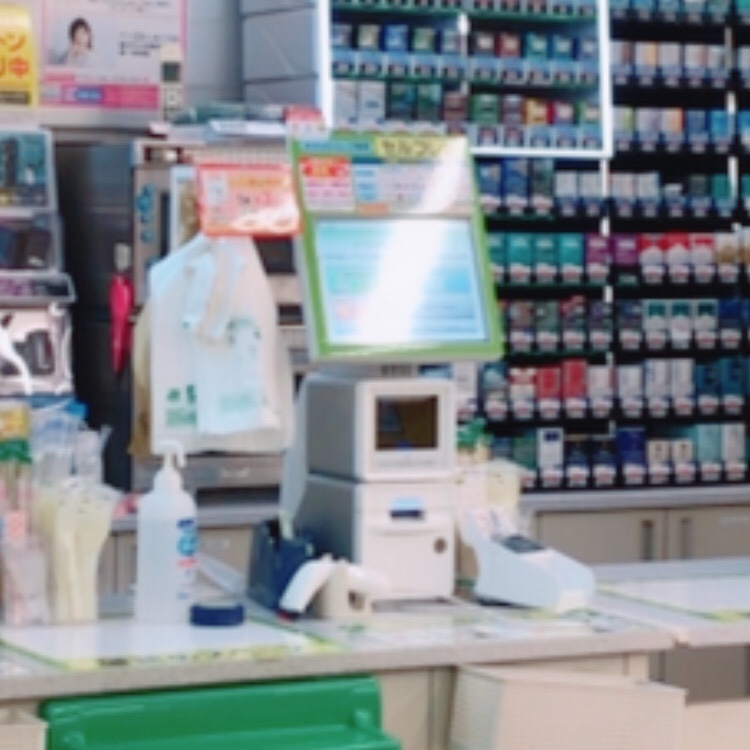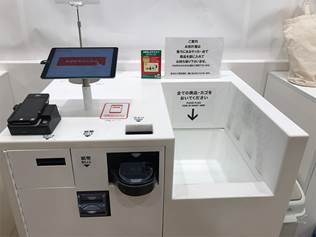– Comparison of types and advantages and disadvantages of unmanned self-checkout counters –
– UNIQLO self-checkout counter patent litigation and implications of related patent litigation –
Recently, in offline stores in Japan, the spread of unmanned self-checkout counters (SELF-CHECKOUT POS SYSTEM), which performs all processes from product price scanning to payment by customers, is expanding. (There are various names depending on the user, such as self-checkout counters, unmanned checkout counters, and unmanned post machines, but in this article, they will be collectively referred to as self-checkout counters.)
First, the types of self-checkout counters and their pros and cons can be briefly summarized as follows.
Self-checkout types
– Full Self: Customer scans the product price and proceeds with payment
– Semi self: The clerk scans the product price and the customer proceeds with the payment
Advantages of self-checkout counters
① Increase in turnover
The checkout turnover rate increases because the checkout desk work on the store side is reduced. When it is crowded with people, it is possible to prevent congestion at the checkout counter by installing multiple payment machines. Eliminating congestion at the checkout counter increases customer satisfaction and prevents crowds around the checkout counter.
② Labor cost reduction
When the turnover of checkout operations is increased, the same amount of work can be performed with fewer people, thus reducing labor costs.
③ Prevention of settlement mistakes
Self-checkouts can help reduce miscalculation of payments and fewer mistakes in change. In a broader sense, work efficiency can be improved and productivity can be improved.
④ Problem solving in terms of hygiene
By enabling non-face-to-face payments, concerns about hygiene issues related to COVID-19 can be reduced.
Disadvantages of self-checkout counters
① Initial cost burden
It can be somewhat burdensome for the seller because there are costs that must be invested in the initial stage, such as the installation cost of the POS machine.
② Secure installation space
It is difficult to introduce the product without securing the installation space, so it is necessary to review in advance whether there is enough space for installation in the store.
③ It takes time for users to get used to it
Self-checkout counters may take some time to read barcodes, etc. if you are not familiar with the operation as the inconvenience for users increases. At the beginning of the introduction, there may be customers who are not familiar with self-checkout counters and need the help of a clerk.
Although there are some restrictions in terms of cost and space, it has a great advantage in profit-making, and the introduction of self-checkout counters in various industries is accelerating due to the addition of environmental factors due to corona. You can easily find self-checkout counters not only in Korea but also in Japan, regardless of industry, such as food, miscellaneous goods, and clothing.
Semi-self-checkout counters installed in convenience stores in Japan

Uniqlo, Japan's leading spa clothing brand, has also introduced self-checkout counters in a significant number of stores before the COVID-19 crisis, and currently about 812 stores in Japan (about 80% of all stores) are operating self-checkout counters. . The self-checkout counter used by UNIQLO is a method of reading product information with a wireless automatic identification tag and proceeding with payment when a customer places a product or a shopping cart in the down space. However, a patent dispute litigation has recently occurred in relation to the self-checkout counter.
Self-checkout counter used by Uniqlo

UNIQLO self-checkout counter patent lawsuit
A brief summary of the litigation is as follows:
On September 2019, 9, Asterisk (Company A), an IT company headquartered in Osaka, Japan, filed a patent lawsuit against FAST RETAILING (Company F), which operates Uniqlo, due to infringement of patent technology related to self-checkout machines. filed an application for an injunction against infringement. On May 24, 2019, company F filed a patent invalidation trial against company A, arguing that the patent was 'a technology that could be easily invented'. The invalidation suit from company F is one of the defendant's countermeasures in the patent infringement lawsuit, and it can be seen as an attempt to assert that the original patent is invalid along with denying the infringement.
Company F's request for an invalidation trial was made before the infringement lawsuit was filed, which can be seen as a response to the expected infringement lawsuit. In general, the claimant of the invalidation trial argues that the patent lacks novelty and inventive step by the new evidence, and infringement proceedings are generally suspended until the result of the invalidation trial is finalized.
In a trial decision on August 2020, 8, the Korean Intellectual Property Office in Japan partially recognized Company F's invalidation claim, and decided that part of the patent was valid. Claims 6, 1, and 2 are invalid, but claim 4 is valid, and claim 3 is a limited but broad patent.
Both company A and F filed a lawsuit to cancel the trial decision to the Japanese Intellectual Property High Court (日本知的財産高等裁判所), dissatisfied with this trial decision, and the judgment of the trial decision cancellation lawsuit was handed down on May 2021, 5. As a result of the judgment, a judgment came out that all of claims 20 to 1 were valid. In response, Company F appealed to the Supreme Court on June 4, 2021. Therefore, this trial decision will not be finalized for a while, and it is expected that the suspension of the infringement lawsuit will continue.
In general, there are not too many cases where the conclusion is overturned in the appeal trial of a patent infringement lawsuit, so it can be thought that company A has won against large company F, but it is not a simple matter. This is because company F requested a second invalidation trial against company A for the same patent (No. 6469758). Under the Patent Act, the same party requesting an invalidation trial again based on the same evidence (so-called overturn) is not recognized under the principle of double jeopardy. However, in this second invalidation trial, because a different set of evidence was being used, it was institutionally recognized. However, the second invalidation trial came out on April 2, 2021, saying that 'all claims are invalid'. If Company F is dissatisfied with the trial decision, it may sue for cancellation of the trial decision.



